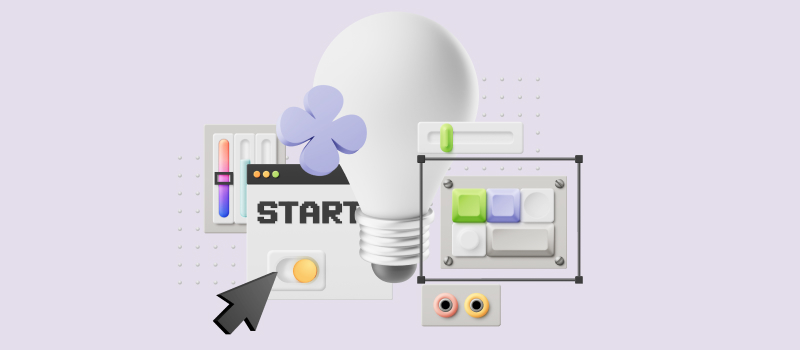
In most organizations, team members work together to achieve some shared goals. But imagine that you and your colleagues keep pondering on the same problems separately, stay distant from each other on a day-to-day basis and rarely discuss real-time work progress. Will you be efficient in fulfilling those shared objectives and delivering projects on schedule? Definitely not.
Hence, every goal-oriented team treats collaboration as the key to success. There are many good reasons for doing so, including higher productivity, improved creativity and stronger morale. That’s why it’s also crucial to apply the right tools to boost collaboration and teamwork and, in this article, we will talk about these collaboration software in detail. We will explore what they are, which types of collaboration software exist and why your team needs to adopt one too.
Collaboration Software: The Basics
To grasp what collaboration software is and understand its purposes, we need to explore the notion of collaboration as a workplace practice.
COLLABORATION is the process of working together in order to attain clearly defined business goals and associated benefits.
According to AIIM, collaboration is impossible without such core elements as:
- Awareness – The understanding of common goals and individual roles that serve the shared objectives;
- Participation – The involvement of all team members in the work process;
- Reciprocity – The mutual sharing of knowledge;
- Mediation – The engagement in collective discussions to resolve problems and find agreeable solutions.
In other words, we can speak of collaboration only when every party makes an equal contribution to the final performance outcome, and when team members communicate with each other regarding work progress on a regular basis.
Now, back to collaboration software.
In short, it aims to support collaboration as a workplace practice. Thus, we can define collaboration software as a digital tool created to help people working together attain shared business goals and gain associated benefits. While doing so, it promotes employee awareness, participation, knowledge-sharing and ongoing communication. Based on this, we may distinguish several types of collaboration software with different functionality and features.
Let’s look at them below.
Major Types of Collaboration Software
Collaboration may be either real-time or time-shifted. In other words, it can either foster instant interactions via calls and text messages or take shape of a more drawn-out exchange of information through files, written comments, etc.
Some collaboration tools support both of these forms of communication. However, many specialize in just one of them and support a limited number of work and group processes, such as:
-
Video conferencing and group chats.
Nothing beats real-time communication in case you need to share ideas quickly, brainstorm and discuss topics in depth. If you have no opportunity to meet offline, a web platform for video calls and group chats is all you need to have a productive collaboration session with your co-workers. Example: Skype
-
Task, project and workflow management.
This group of tools assists in work planning, workload distribution and progress tracking. Task and project management apps do not always include commenting features and chats. However, these apps are an intrinsic part of team collaboration since they allow everyone to coordinate efforts, stay in the know of what’s going on and collect informative performance data for future decision making. Example: actiTIME
-
Document management.
Collaboration software with document management functionality allows creating, editing and sharing files across multiple users. It lets teams store information in a single place and retrieve necessary documents in an easy way. Example: Google Drive
-
Version control.
This category of collaboration tools is applied by software developers and engineers. It is used to keep track of changes made to the source code and helps to make bug fixing and work on feature updates more efficient. Example: Git
-
Knowledge management.
The objectives behind this practice are to gather, distribute and promote the effective use of knowledge that may assist businesses in driving improvement (e.g., boost innovation, increase the quality of customer service, etc.). Thus, knowledge management tools contain features for the storing and sharing of files. Besides, they allow users to collect important information, create databases and discuss ideas. Example: Guru
-
Digital calendars.
These tools support integration with email systems and other communication platforms for streamlined event scheduling. They also include such features as contact lists, availability checking and sharing, group calendars and collaborative scheduling, which foster effective coordination of meetings and appointments across team members. Example: Harmonizely
Main Benefits for Your Team
Provided that you’ve just started to encourage your team members to collaborate, you’re bound to notice some improvements in the levels of their motivation and engagement quite shortly. You may also expect to boost individual and organizational productivity, strengthen team cohesion, promote innovation and enhance creativity. With all that, you’ll become able to retain staff and attract new talents with ease and, as the study by Google Works and Raconteur revealed, gain a massive chance to become more profitable.
Yes, team collaboration produces that many benefits. And by using a specialized piece of software to support it, you will gain them much faster. Moreover, you’ll get some extra perks:
-
Increased process efficiency.
Collaboration software supports a streamlined approach to information management, allowing for quick access to documents, automatically notifying users on file updates and eliminating the need to share important details with each relevant stakeholder one by one. It saves time and enables you to use it up on more vital tasks.
-
More productive and satisfying communication experience.
Applying a collaboration platform, you obtain an opportunity to connect with key professionals in a matter of seconds, regardless of whether they’re sitting in the same facility with you or are located in a different part of the world. This is particularly in handy when most of your staff members telecommute. Plus, by replacing such traditional communication channels as emails with something more innovative and up-to-date, you’ll shift employees’ perceptions of internal communications from old and boring to fun and interesting.
-
Superior project management results.
By promoting continual communication, collaboration software will help everyone in your team stay aware of current project progress, resolve challenging problems collectively and promptly, find more creative solutions and, thus, maximize your chances for positive work outcomes.
-
Stronger and more competent team.
Software-enabled collaboration grants easier access to new knowledge and helps people to engage in discussions on versatile topics with ease. Therefore, it boosts employee proficiency, helps your staff members acquire new skills, fosters trust and improves morale. And what can drive your business success better than a team of highly capable and strongly bonded professionals?
















































